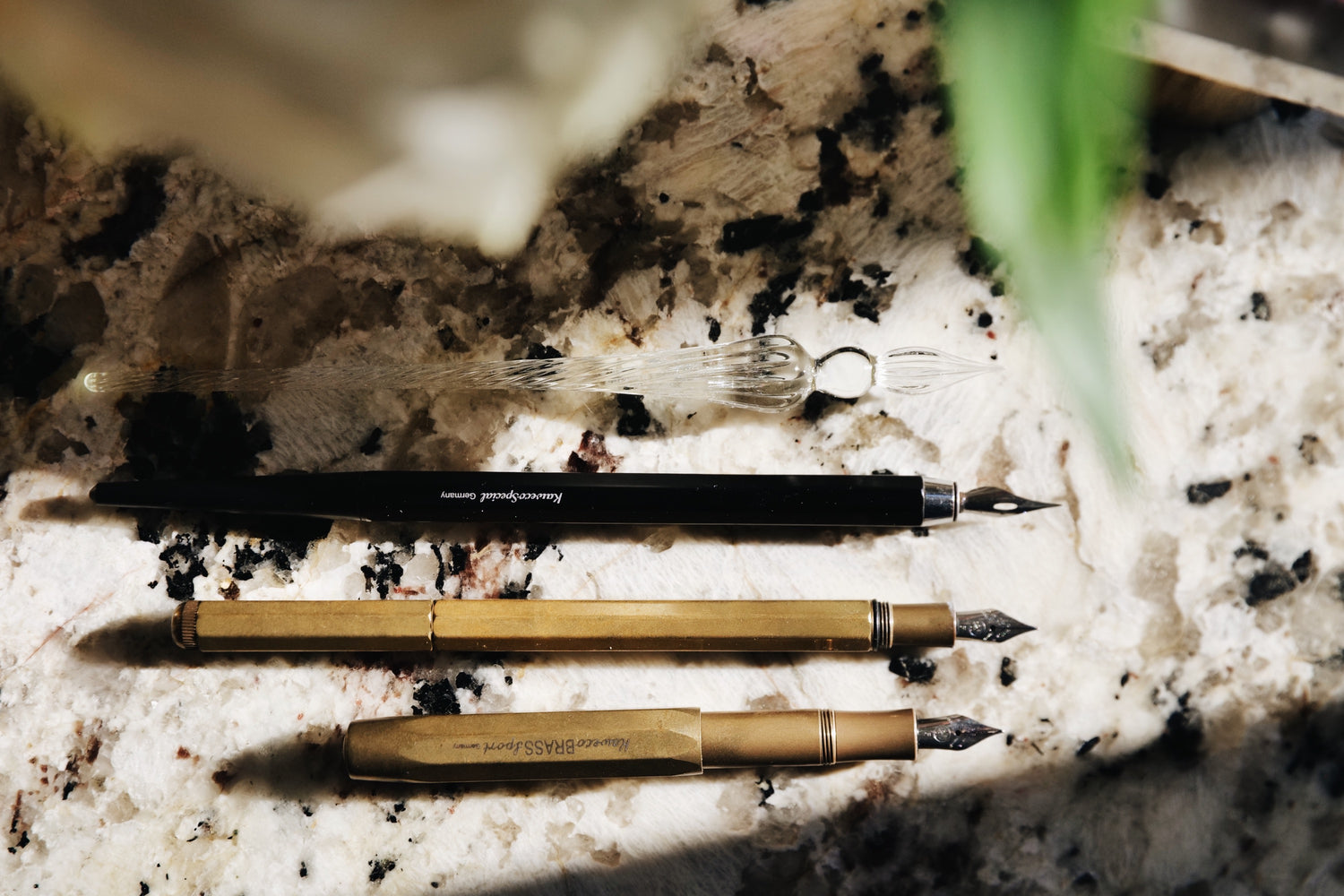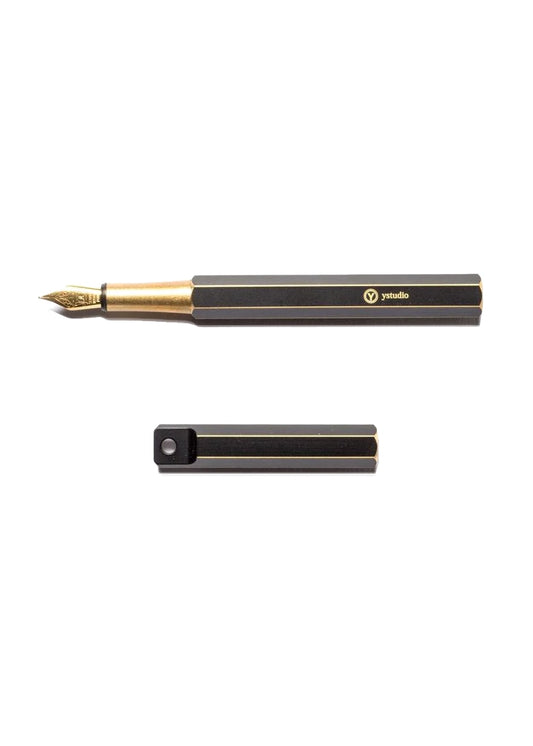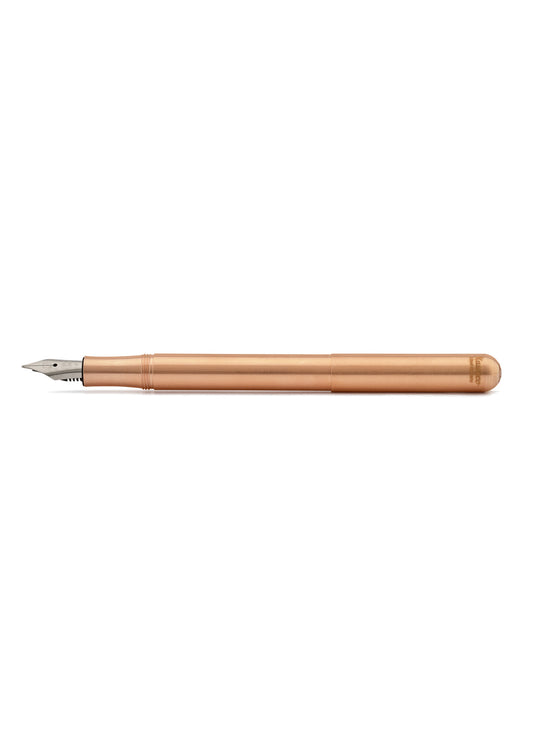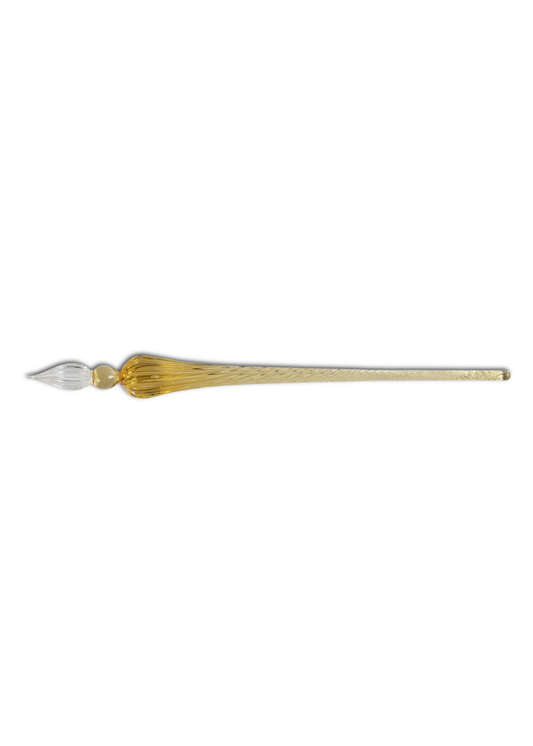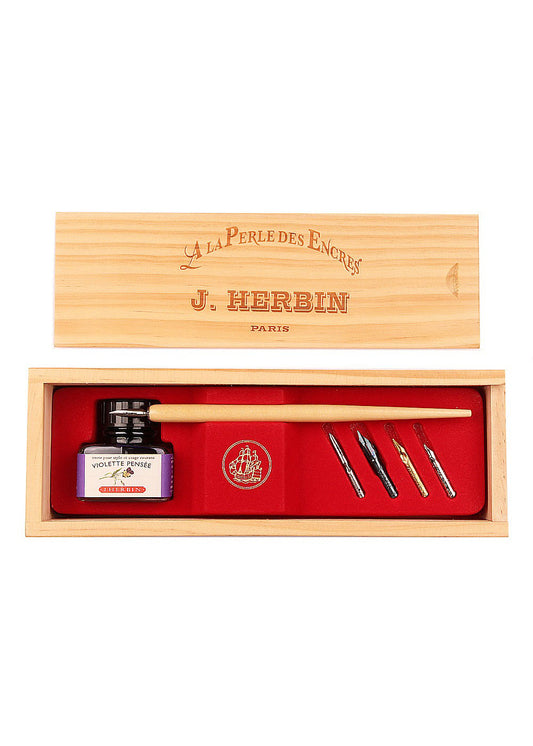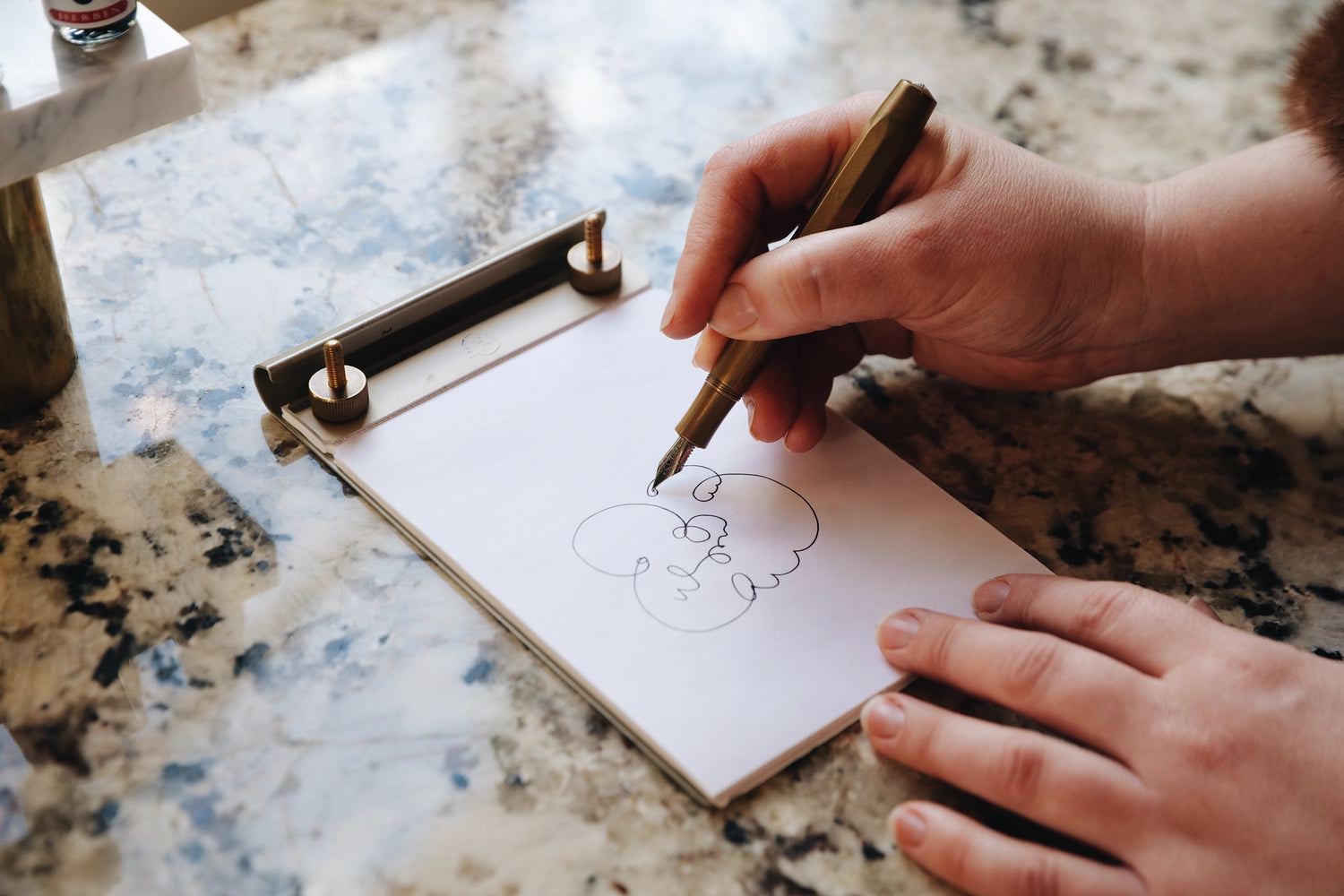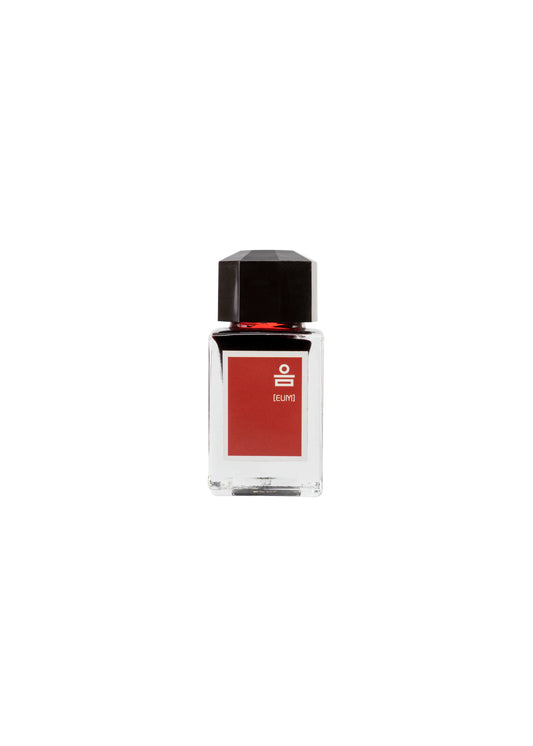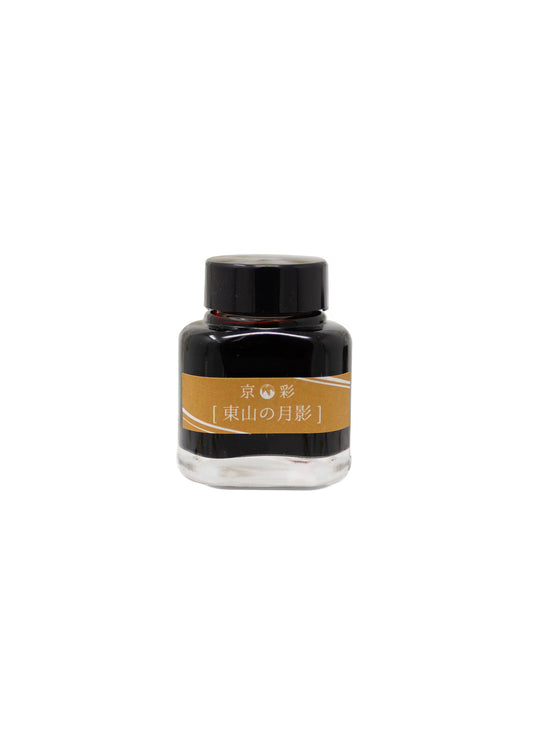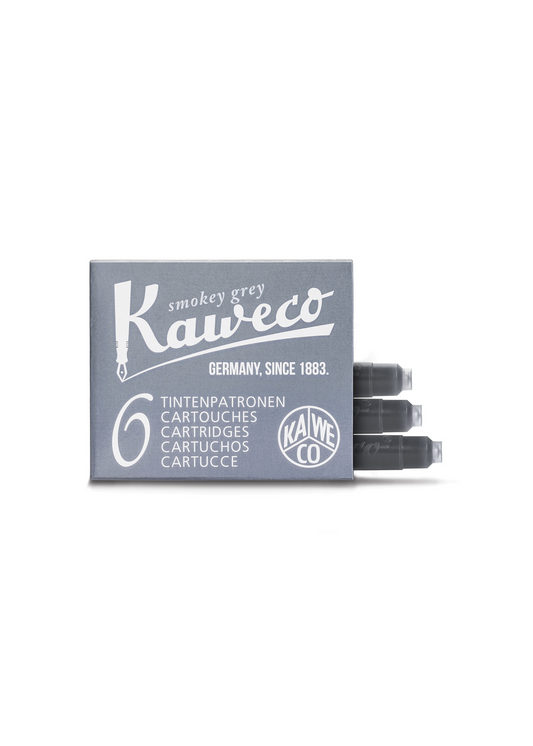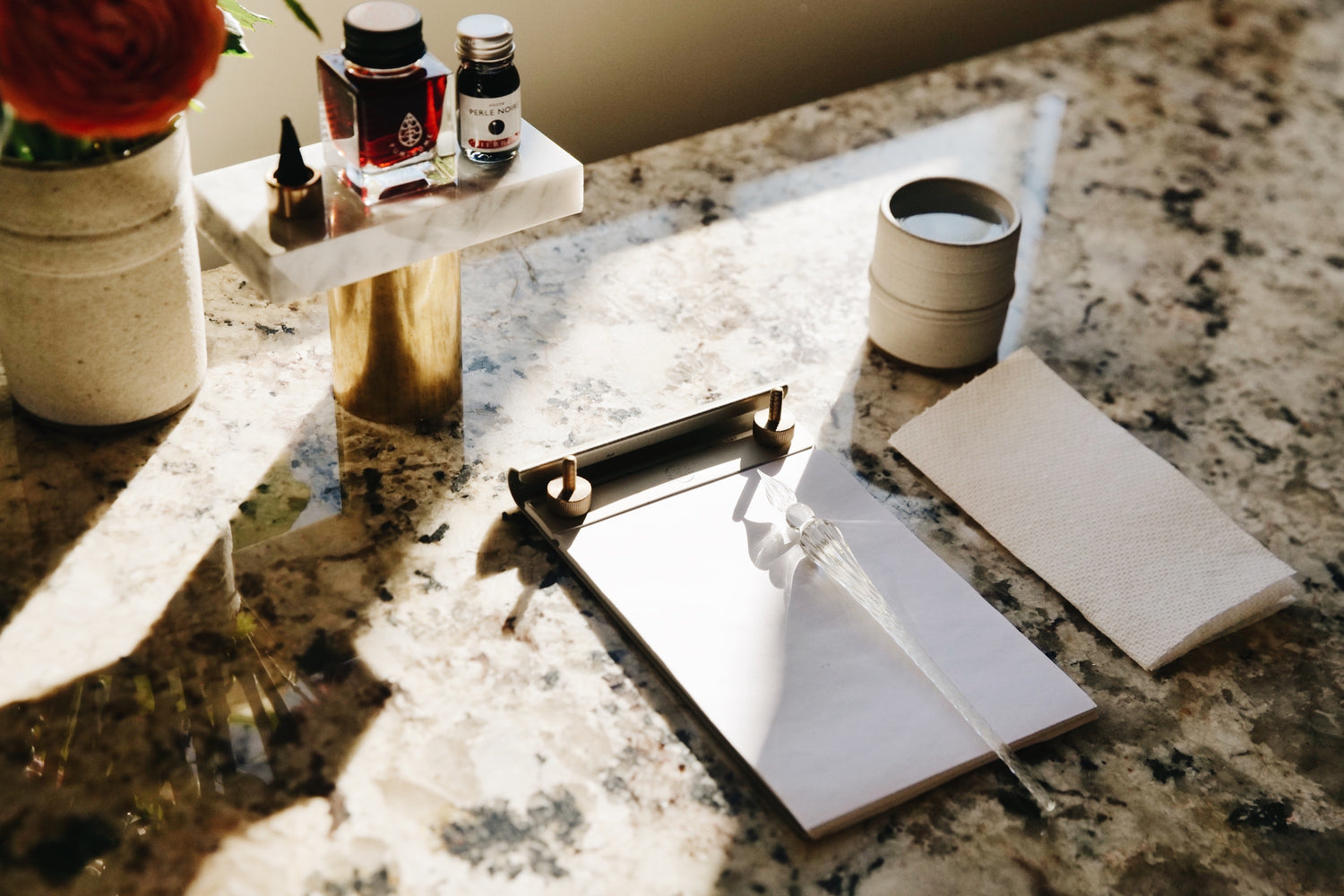“I know nothing in the world that has as much power as a word. Sometimes I write one, and look at it, until it shines.”
– Emily Dickinson
Nostalgia swirls in the ink pot. Rumors suggest that Shakespeare wrote in iambic pentameter because that’s how long the ink would last between dips. A classic rhythm with a timeless flair. It bleeds romance. The kind of everyday crush that brings you back to the pad.
Once upon a time, it was a luxury to write. The word pen comes from the Latin word for feather. Feathers were the most common writing instrument from the 6th to the mid-19th century. The strongest quills were pulled from the left wing of living birds in the spring. Only five feathers per bird were considered suitable. Swan feathers were preferred, goose feathers were common, and crow feathers made the finest lines. They needed to drink ink every couple of words, and it only lasted about a week. The paper would wear down the points, and it took skill to sharpen them properly. Reeds and brushes were also used, but what if you had a lot to say? There had to be a better way!
Explore our full selection of fountain and dip pens here!
Dip & Fountain Pens
-
Brassing Portable Fountain Pen
Regular price $178.00 USDRegular priceUnit price per -
Liliput Copper Fountain Pen
Regular price $120.00 USDRegular priceUnit price per -
J. Herbin Round Glass Dip Pen - Sand
Regular price $24.00 USDRegular priceUnit price per -
Wooden Gift Writing Set
Regular price $42.00 USDRegular priceUnit price per
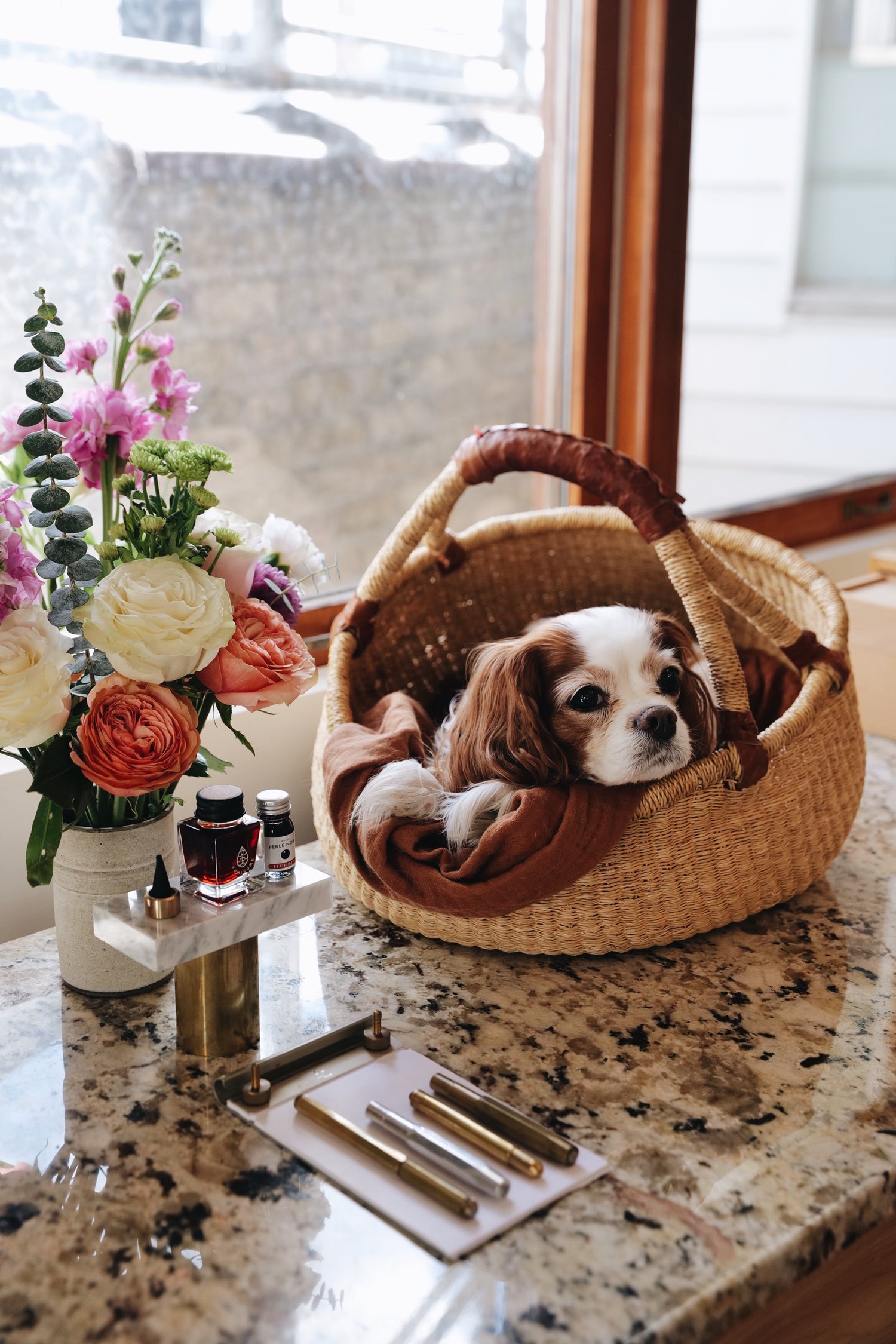
Simple in its construction a dip pen consists of a metal pen point (called a nib) and a handle. Popular with calligraphers and illustrators it is more sensitive to pressure. Different nibs can create lines with various widths and personalities. Many types of ink can be used. This humble instrument helped improve literacy and education by being an affordable option. Metal nibs existed, but they were rare and rigid. To make a more flexible steel point a breathing hole was cut in the middle at the top of a slit. Two capillary slits were cut on the sides. This allowed the ink to flow with ease.
Naturally people wanted a pen that held its own ink so they could write continuously. Ink wells have a tendency to be a bit messy if you aren’t careful.
There are three main parts to a fountain pen: barrel, nib, and feed. The feed helps the ink get from the reservoir to the nib through the capillaries. The barrel is what we hold and where the ink lives. There are many different designs. Many of the first functional fountain pens were made in England. Birmingham was booming in the 19th century! At the height of operations, there were around 100 pen companies that employed 8,000 craftsmen. For a long time, any pen that held its own ink was considered a fountain pen. With the invention of the ballpoint pen, many of these factories closed, but the love of the fountain pen lives. It has survived centuries and is making a comeback.
There’s a reason we are obsessed. They are a joy to handle! A beautiful and elegant eco-friendly alternative to the one-and-done throwaway pens most people use on the regular.
Select the best set-up
• Pick the pen barrel you want to have and to hold. They can last a lifetime. Think before you ink! Or try a few!
• If you want to enjoy a deep sparkling vintage, an emerald that gets darker as it ages, or a rich burgundy it is advisable to pick up a dip pen or a fountain pen with a converter. (Inks with metallic inclusions are best used dipped.)
• A glass body is always stylish! This classic beauty is effortlessly cool.
• If a continuous script is more your speed, choose a fountain pen that can roll with a pre-filled cartridge or converter.
• Do you want your pen to be your sidekick? This baby is the perfect companion for journaling each morning. Make a routine of dipping the nib into ink and suctioning it into the built-in converter.
• There are a great variety of nibs available. The larger the nib the wider the line. If you want to flirt with multiple nibs make sure you choose a nib and nib holder that can handle the exchange.
Dip & Fountain Inks
-
Hunminjeongeum Ink Min - Scarlet Red
Regular price $12.00 USDRegular priceUnit price per -
Kyo Iro Ink: Moonlight of Higashiyama
Regular price $28.00 USDRegular priceUnit price per -
Smokey Grey Ink Cartridge
Regular price $4.00 USDRegular priceUnit price per
Set up, Storage, & Maintenance
• There are several ways to fill a fountain pen depending on its reservoir. Fountain pens with cartridges must be ignited or activated in order to get the juices flowing. Take off the cap. Unscrew the nib to open up the body. Take out the cartridge. Break the seal. Plug it in and enjoy!
• If you want to use bottled ink in a fountain you usually have to fill a converter and plug it into the barrel. There are many different converters and ways to fill them. Some fill with a push of a button or a turn of a screw, while others take a steady hand that’s holding an eye dropper or syringe.
• If you use a converter, you must empty the ink between uses to prevent clogging.
• Fountain pens can use water-based ink that can take a while to dry. Blotting paper is the best, a roller is fun, and a carefully laid paper towel will do the trick.
• Dip pens can take a variety of inks and paints. Splash around with the possibilities. You can even sign your name in blood if you have the stomach for it.
• Nibs can corrode if they are not properly cared for. It is best to cap your fountain pen.
• If a glass pen chips, use fine sandpaper and go to town.
• You can bathe your nib in a warm, soapy bath if it becomes clogged. Give it a rinse and let it air dry.
• Store your pen horizontally like a good knife or let them stand nib side up. We recommend a case if you're on the go or a vessel if you’re stationary.
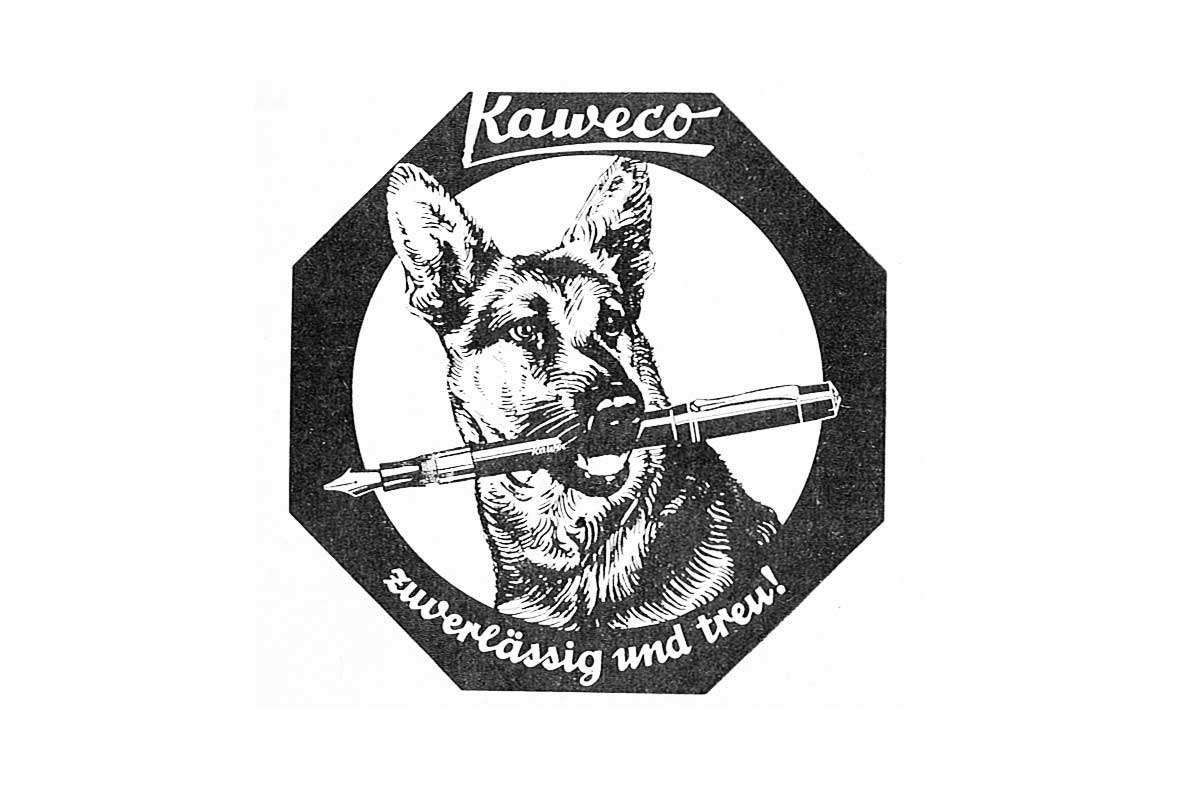
A Little History
Kaweco was founded in 1883 in Heidelberg, Germany. Their first products were wooden dip pens with gold nibs they sourced from a New York company they ended up buying in 1914. Heinrich Koch and Rudolph Weber took over the Heidelberg dip pen company in 1899. The name changed in 1926. It is derived from the first two letters of their last names and the word Compagnie (which means company). These pens are cool, collectible, durable, customizable, and totally portable.
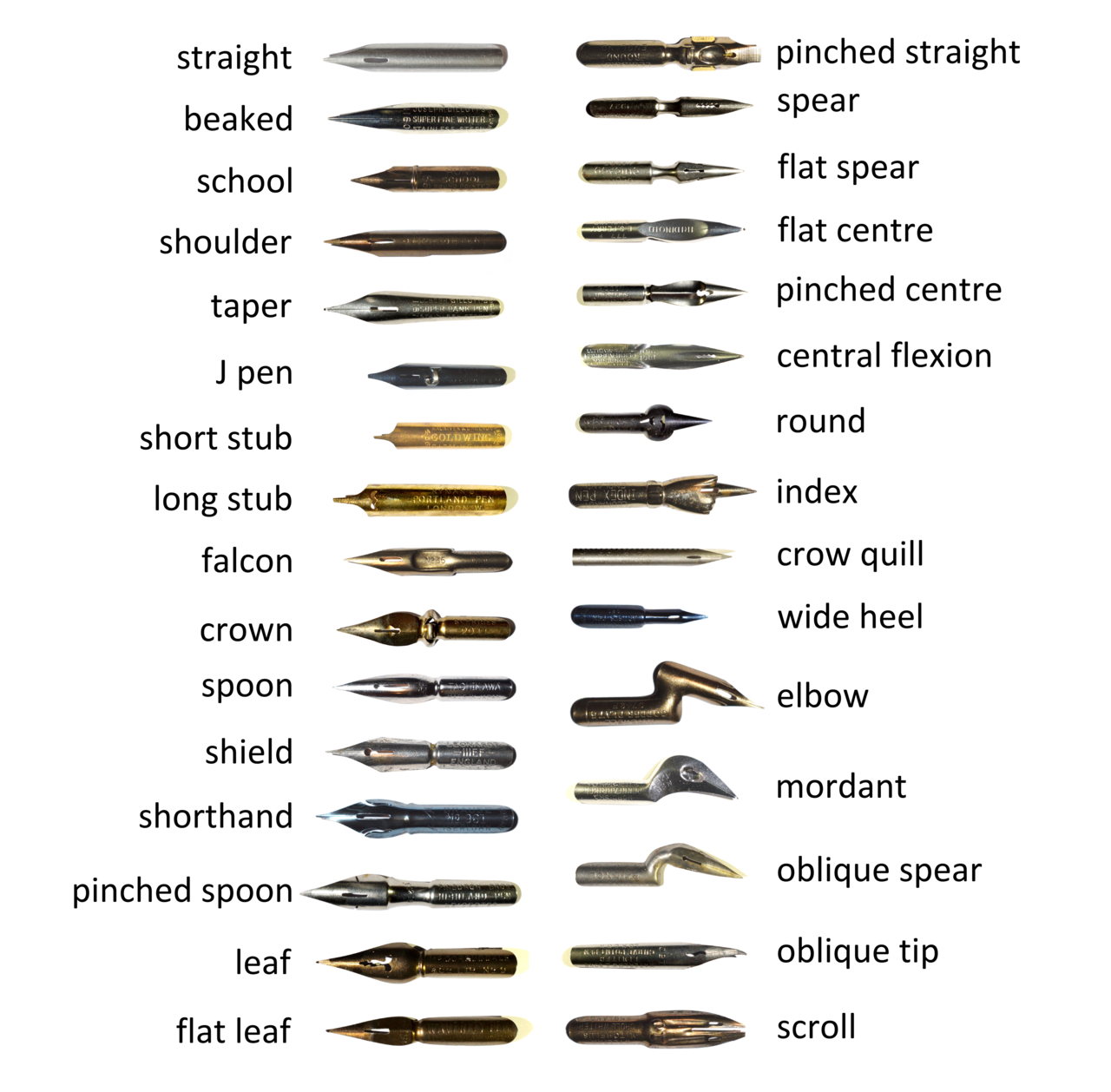
The story of the oldest ink production company in the world, J. Herbin, begins with a French sailor. It makes sense that their legendary ink is water-based. Jacques’ journeys brought new formulas for ink and sealing wax to Paris from India. Their fountain and dip pens are stunning. Victor Hugo and Coco Chanel were big fans! They even made Hugo a special black ink. When you’ve been around since 1670, you’ve got to be good. Their ink is perfect for vintage pens because it was made for them. Color us impressed!
